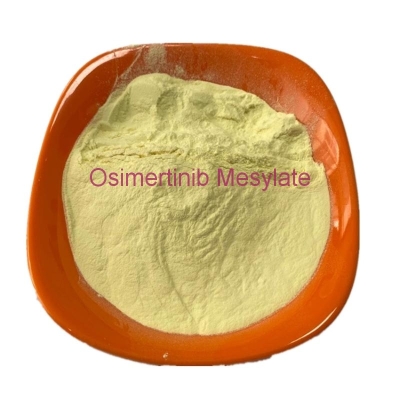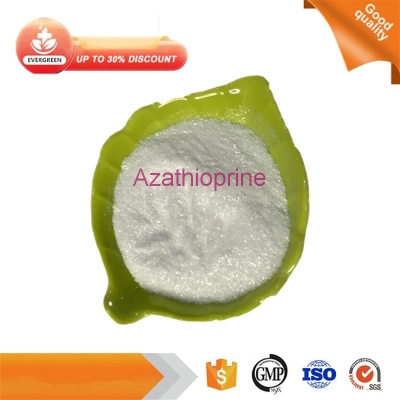-
Categories
-
Pharmaceutical Intermediates
-
Active Pharmaceutical Ingredients
-
Food Additives
- Industrial Coatings
- Agrochemicals
- Dyes and Pigments
- Surfactant
- Flavors and Fragrances
- Chemical Reagents
- Catalyst and Auxiliary
- Natural Products
- Inorganic Chemistry
-
Organic Chemistry
-
Biochemical Engineering
- Analytical Chemistry
- Cosmetic Ingredient
-
Pharmaceutical Intermediates
Promotion
ECHEMI Mall
Wholesale
Weekly Price
Exhibition
News
-
Trade Service
Multiple myeloma (MM) is the second most common malignant tumor in the blood system, and there is still no cure
The meeting was chaired by Professor Qiu Lugui from the Hospital of Hematology, Chinese Academy of Medical Sciences.
As one of the main authors, Professor An Gang explained in detail the guidelines for the integrated diagnosis and treatment of MM in the CACA series of guidelines
Figure 1 Key advances in the treatment of MM
For MM patients, minimizing tumor burden and maintaining a low tumor burden state are the main therapeutic goals
In the selection of treatment regimens, MM patients who are suitable for transplantation should choose a treatment regimen that can rapidly and effectively control disease progression, is well tolerated, and does not affect the collection of autologous stem cells in the induction therapy stage before autologous hematopoietic stem cell transplantation (ASCT).
Professor Wang Luqun took stock of the latest progress of the 2022 EHA&ASCO annual meeting, and explained the treatment of newly diagnosed MM (NDMM) in simple language
For transplant-eligible NDMM patients, the results of the current study show that the D-VTd regimen resulted in superior and significantly improved depth of response compared with the VTd regimen (bortezomib + thalidomide + dexamethasone).
Figure 2 CASSIOPIA study results
Figure 3 Subgroup analysis results of the GMMG-HD7 study
In addition, the CD38 mAb-based combination regimen also showed good efficacy in NDMM patients who were not suitable for transplantation
.
A subgroup analysis of the MAIA study showed that the DRd regimen demonstrated faster and more durable responses compared with the Rd regimen (Figure 4) 4
.
Figure 4 The results of the subgroup analysis of the MAIA study
With the advancement of detection methods, the importance of MRD assessment in MM has become increasingly prominent
.
Multiple studies have shown that MRD negativity predicts better survival outcomes compared with traditional efficacy measures, and further improvements in PFS can be observed with increasing levels of MRD sensitivity
.
At present, many clinical trials have used MRD negativity as the endpoint of efficacy evaluation.
In the future, MRD evaluation may play a more positive role in the dynamic risk stratification of MM patients and guide the selection of treatment options
.
Focusing on clinical hotspots, immunotherapy leads the new direction of RRMM treatment
Professor Wang Yafei shared the latest progress in immunotherapy at the 2022 EHA&ASCO Annual Meeting on the hot issues of relapsed/refractory MM (RRMM)
.
In recent years, the availability of MM drugs in China has improved significantly
.
Immunotherapy drugs such as monoclonal antibodies, antibody-drug conjugates (ADCs), bispecific antibodies, and chimeric antigen receptor T cells (CAR-T) have sprung up like mushrooms after a spring rain, and there are more and more treatment options for RRMM patients
.
CD38 mAb has shown superior efficacy and safety in both early relapse and late relapse MM patients after multi-line therapy, and has been recommended by domestic and foreign guidelines as the preferred treatment for RRMM5,6
.
Subgroup analyses of POLLUX and CASTOR showed that the combination regimen containing daratumumab prolonged PFS 7
in RRMM patients regardless of the time to relapse after first-line therapy .
The results of the ICARIA-MM and IKEMA studies showed that Isatuximab-based treatment significantly prolonged PFS and OS in patients with RRMM, and subgroup analysis showed that it also showed significant survival in patients with advanced age, renal insufficiency, and 1q21+ Benefit 8
, 9 .
In addition to CD38 monoclonal antibody, new immunotherapy drugs such as ADC, bispecific antibody, and CAR-T provide more options for RRMM patients
.
Belantamab Mafodotin, a BCMA-targeting ADC, has been approved as a monotherapy for RRMM patients with ≥4 previous lines of therapy, and its combination therapy is currently being explored
.
The results of the phase I/II MajesTEC-1 study showed that Teclistamab, a bispecific antibody targeting BCMA and CD3, was able to achieve deep and durable remission in patients with RRMM and was well tolerated 10
.
As a CAR-T therapy targeting BCMA, Cilta-cel has carried out a number of key clinical studies.
The long-term follow-up data of the CARTITUDE-1 study further confirmed the efficacy of cilta-cel in the treatment of RRMM, and promoted the approval of Cilta-cel in the FDA.
Approved
.
Summarize
In recent years, with the continuous emergence of new drugs and the continuous upgrading of detection technology, the treatment of MM has made significant progress
.
The CD38 mAb-based combination regimen has shown good efficacy and safety in both NDMM and RRMM patients, and has been unanimously recommended by domestic and foreign guidelines
.
In addition to CD38 monoclonal antibody, new immunotherapy drugs such as ADC, bispecific antibody, and CAR-T also bring more choices and more hope for cure to RRMM patients
.
Professor An Gang
Hematology Hospital, Chinese Academy of Medical Sciences, Chief Physician, Associate Professor, Master Supervisor
State Key Laboratory of Experimental Hematology Level II PI
Vice-chairman of the Second Youth Committee of Hematology and Tumors of China Anti-Cancer Association
Member of the Youth Committee of the 11th Committee of the Chinese Medical Association Hematology Branch
Youth Director of China Anti-Cancer Association
Member of the Hematology Transformation Committee of the Chinese Anti-Cancer Association
Member and Secretary of China Multiple Myeloma Research Alliance
Secretary of the Hematology and Tumor Committee of China Anti-Cancer Association
Tianjin Anti-Cancer Association Geriatric Oncology Professional Committee
Member of Tianjin Genetic Advisory Committee
2003,2006-2011、;2013/11-2016/5Dana-Farber
Blood 、Leukemia 、ClinicalCancer Research 、Blood AdvancesSCI10
/,, (AMN)
CSCO
CSCO
:、、
[1].
(CACA)——.
[2]Avet Loiseau, et al.
2021 ASH; Abstract 82.
[3]K.
Mai E,et al.
2022 EHA; Poster 930.
[4]Facon T,et al.
2022 ASCO; Abstract 8044.
[5]NCCN Clinical Practice Guidelines in Oncology: Multiple Myeloma.
Version 4.
2022.
[6] Chinese Medical Doctor Association Hematologist Branch, Chinese Medical Association Hematology Branch.
Guidelines for the diagnosis and treatment of multiple myeloma in China (revised in 2022) [J].
Chinese Journal of Internal Medicine, 2022, 61(5) : 480-487.
[7] Shah UA, et al.
BMJ.
2020 Sep 21;370:m3176.
[8] Dimopouios MA, et al.
Leukemia.
2021;35(2):562-572.
[9] Capra M, et al.
Haemalologica.
2022.
107(6):1397-1409.
[10] Moreau P, et al.
N Engl J Med.
2022;10.
1056/NEJMoa2203478.
Approval number: MAT-CN -2218021
statement
1.
This material is intended to convey cutting-edge information, and does not constitute a recommendation or promotion of any drug or diagnosis and treatment program (including drugs under development)
.
2.
The information contained in this material should not replace the medical advice provided by any medical and health professionals.
For specific disease diagnosis and treatment, please follow the opinions and guidance of medical and health professionals.
3.
Isatuximab has not been approved in mainland China
Click "Read the original text" to see more content







